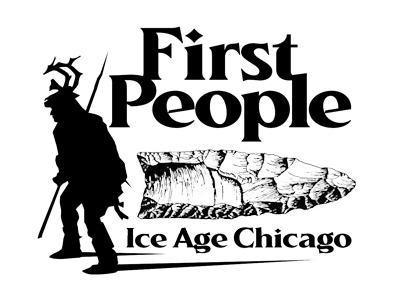The earliest evidence of humans in what is now Illinois dates to around 13,000 years ago – the very end of the last Ice Age. Often referred to as “paleoindians” (literally meaning “old”) but here we choose to acknowledge the deep history of indigenous people with this landscape by refering to them as the “First People”. The archaeological footprint of these earliest people is difficult to study, as they tended to live in small groups that moved rapidly and purposefully across a landscape that they shared with animals such as mastodon, stag moose, musk ox, and caribou. Few sites dating to this time have been professionally investigated, and archaeologists must rely on the often beautifully crafted stone points from this time to tell the story of how these societies colonized this region, organized themselves, interacted with one another, and adapted as their environments became more like those of today. Archaeological evidence shows that these early hunting-gathering peoples responded to rapid environmental change with dramatic shifts in how they used the physical landscape as well as how they created and maintained their social landscapes, abandoning or moving into new areas, developing new technologies, and over time potentially modifying entire ecosystems.
How do we know what we know?
In Illinois, few sites dating to this time period are known, and none in Cook County have been professionally investigated. As a result, we are forced to look outward towards other parts of the State and surrounding regions to help us infer what people might have been doing in Cook County at the end of the last Ice Age. Fluted point distribution studies are one means of looking at large scale patterns of landscape use. Because this distinctive style of artifact was only made during this time, the careful recording and mapping of where fluted points have been found along with recording the source of material used to craft these spearpoints helps us to reconstruct the movements of these people across the region. In short, we work backwards from where the object was found in relation to the source of the chert that it was fashioned from to look at the movement of items, and thus people across the landscape. Indeed the movement of these different types of chert also reflects the complex social systems and relationships that existed at that time. Learn more by visiting the website below!
The Illinois and Wisconsin Fluted Point Survey
Study of the First People often involves the cooperation of numerous professionals, avocational archaeologists, and interested members of the public as well as collaboration with ecologists and earth scientists. To learn more or report an artifact and help tell this unique story please visit:





